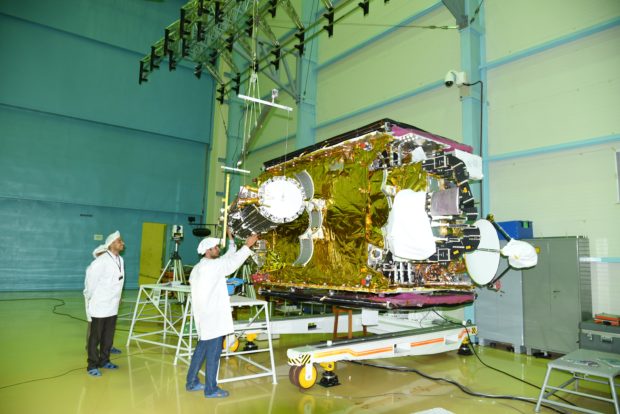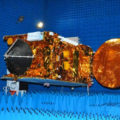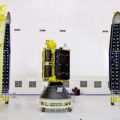India’s latest communication satellite GSAT-6A was successfully placed in orbit on Thursday. It was once embroiled in controversy like its predecessor GSAT-6, launched in 2015.
ISRO GSAT 6 controversy
The two satellites, weighing two tonnes, became a subject of controversy previously. 90 percent of their transponders were to be leased to Devas Multimedia Ltd by Indian Space Research Organisation (ISRO) commercial arm Antrix Corporation . Under a deal, which was annulled in February 2011 on the ground that the country’s defense needs had to be met first.
Antrix had signed the $300 million contract with Devas in January 2005 and obtained sanction of the Space Commission and the Union Cabinet for the two satellites (GSAT-6 and GSAT-6A) without informing the government that the bulk capacity (90 percent) would be leased to the multimedia service provider.

GSLV MK2 /F-08 at launchpad to launch the ISRO GSAT 6A.
When the controversy broke in December 2009, the state-run ISRO ordered a review of the deal and subsequently the Space Commission had recommended its annulment on July 2, 2010. Antrix terminated the deal on 25 February 2011.
Top facts about ISRO GSAT 6A
- The next generation Vikas engine developed by the Liquid Propulsion Systems Centre (LPSC) is being flown for the first time.
- The improved engine would give a significant advantage in terms of enhancing payload capability.
- A 6% increase in thrust that gives us 70 kgs of additional payload gain in this mission. These engines currently are being used on second stage.
- The four strap-ons and second stage will be boosted with high-thrust Vikas engines.
- Cryogenic upper stage will be loaded with enhanced propellants of 15 tonnes instead of current 12.8 tonnes and will be operated with 9.5 tonne thrust compared to the present 7.5
- It is the 12th flight of GSLV and sixth flight with indigenous Cryogenic Upper Stage.
- The payload GSAT-6A is a high power S-band communication satellite. It will be India’s second predominantly S-band communications satellite
- Which measn the Indian Army will not require to carry heavy equipment .
- Huge boost for army communication . S Band is exclusively reserved for Indian Army.
- The purpose of the satellite is to provide a platform for developing technologies such as demonstration of 6m S-Band ‘Unfurlable Antenna’, handheld ground terminals and network management techniques.
So do you like to read such articles , consider liking our page on Facebook here , following us on Twitter here ,or if you love some visual treatment , we make some high quality videos on YouTube as well which you can view here . have a great day :). Visit our homepage HERE for the LATEST SCIENCE NEWS.




